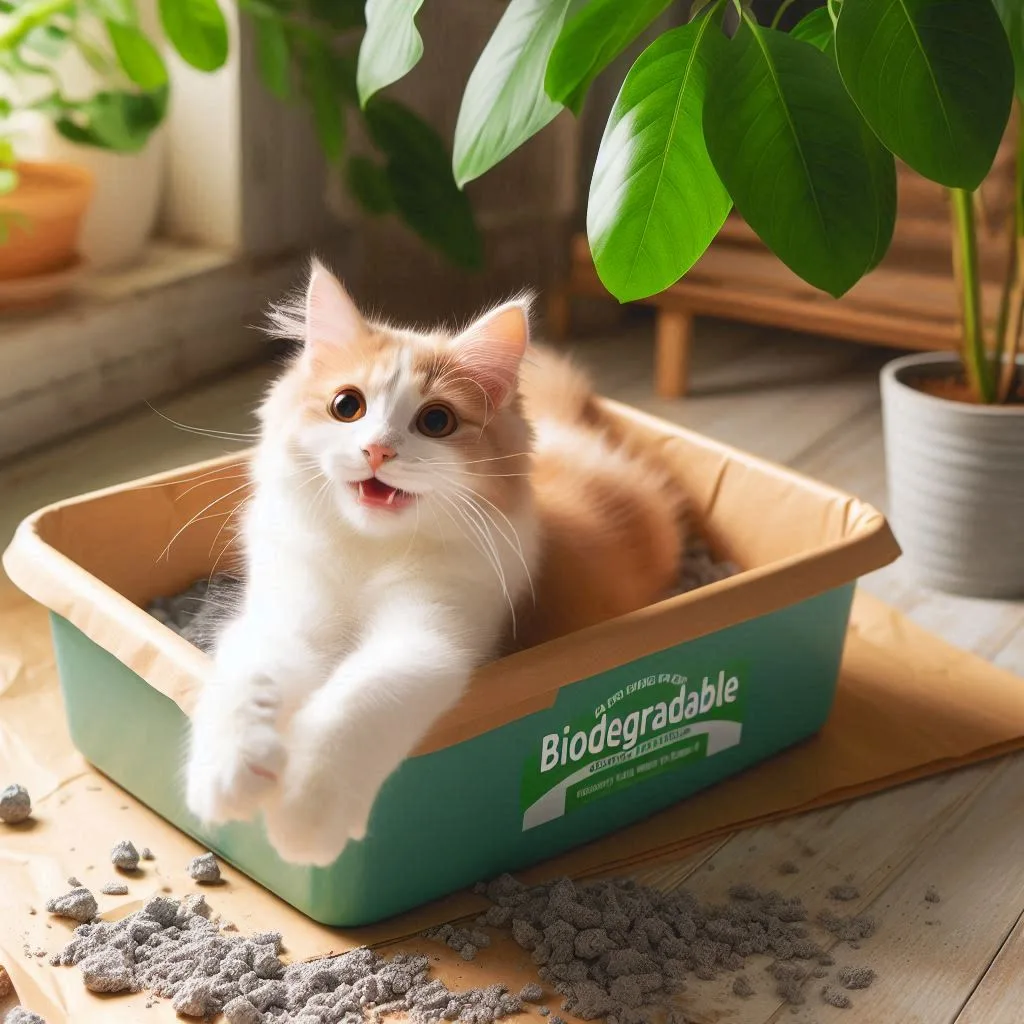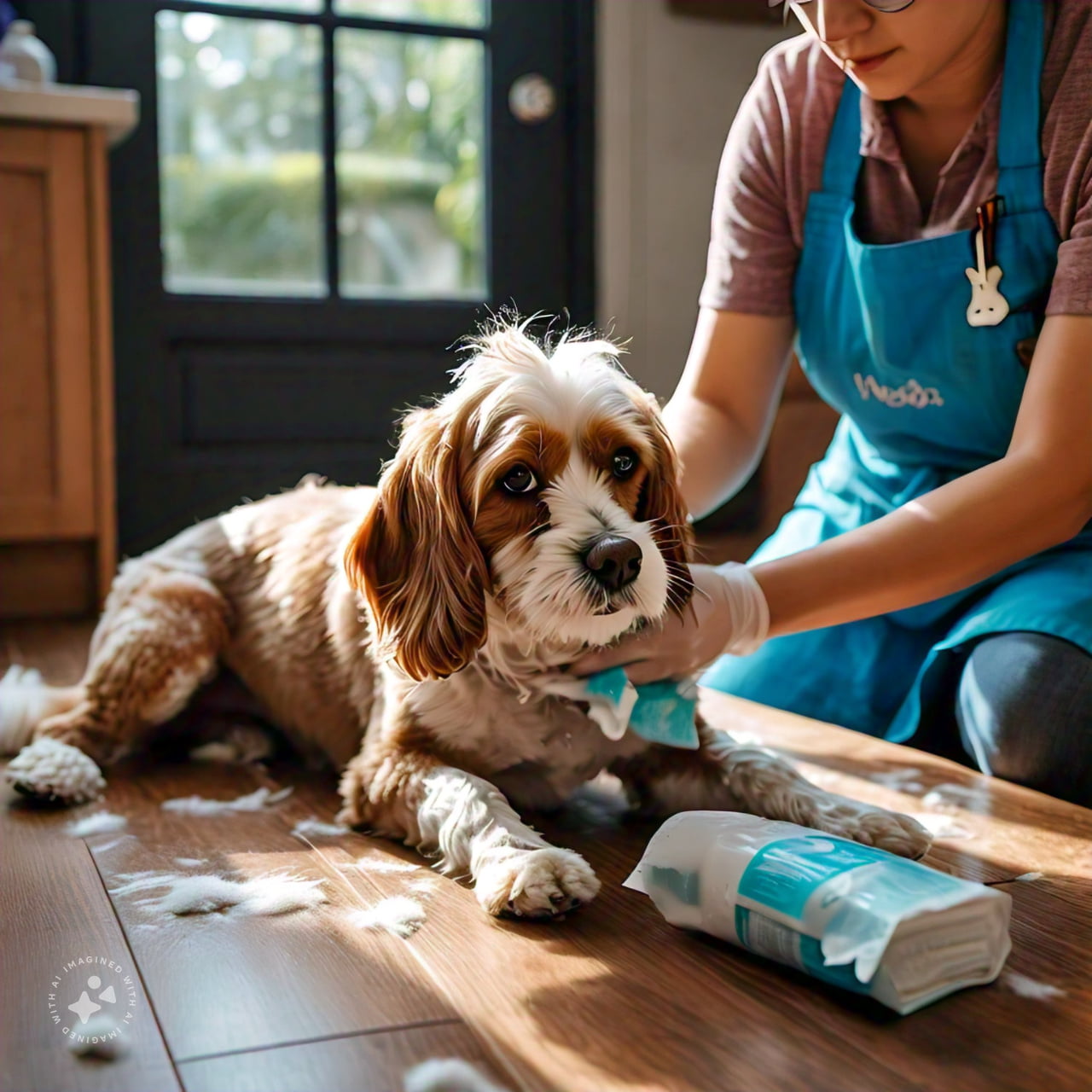Top Benefits of Using Biodegradable Cat Litter for Your Cat and the Planet
Introduction
Choosing eco-friendly pet products is more important than ever. As a cat owner, one of the simplest yet impactful switches you can make is to biodegradable cat litter. Not only does it benefit the environment, but it also offers multiple advantages for your feline friend. Let’s dive into why biodegradable cat litter is a game-changer for both your cat and the planet.
What is Traditional Cat Litter?
Traditional cat litter is typically made from clay and is the most common type of litter. It is non-biodegradable and ends up in landfills, contributing to environmental pollution.
Some of the other issues with it are:
- It can generate dust which can irritate cats’ respiratory systems and cause allergies in humans.
- It often sticks to cat’s paws and gets tracked throughout the house.
- It is heavy, making it difficult to transport and replace.
What is Biodegradable Cat Litter?
Biodegradable cat litter is made from natural materials like wood, paper, and corn that break down naturally over time. Unlike traditional clay litter, which can sit in landfills for years, biodegradable litter decomposes quickly and safely. This type of litter works by absorbing moisture and clumping waste, making it easy to clean and maintain.
Here is a comparison table of different biodegradable litter types for you to determine the best option for your needs:
| Litter Type | Odor Control | Clumping | Tracking | Dust Level | Eco-Friendliness | Cost | Best For |
| Corn | Good | Excellent | Moderate | Low | High | $$ | Multi-cat households, odor control |
| Wheat | Good | Good | Low | Low | High | $$ | Sensitive paws, low tracking |
| Pine | Excellent | Poor | Low | Moderate | Very High | $ | Strong odor control, budget-conscious |
| Paper | Fair | Poor | Very Low | Very Low | High | $ | Cats with respiratory issues, post-surgery |
| Tofu | Good | Excellent | Low | Very Low | Very High | $$$ | Allergy-prone cats and owners, flushable |
| Grass Seed | Good | Excellent | Low | Very Low | High | $$$ | Cats who prefer fine-grained litter |
| Walnut | Very Good | Good | Moderate | Low | High | $$ | Natural odor control, dark color hides waste |
What Are The Environmental Benefits of Biodegradable Cat Litter?
Reduced Environmental Impact:
Traditional clay litter takes a huge toll on the environment. The mining process for clay is resource-intensive and leaves a significant carbon footprint. Compared to that, biodegradable cat litter is made from renewable resources using sustainable manufacturing processes conserving natural resources. While clay litters can take up to 500 years to decompose in landfills, biodegradable options break down much faster, typically within a few months to a year.
Compostability:
Can traditional dirty Cat Litter be composted?
It’s generally not recommended to compost used cat litter in home systems due to the risk of parasites and harmful bacteria. However, some industrial composting facilities can safely process used biodegradable litter.
One of the great features of biodegradable litter however is its compostability. You can compost certain types of biodegradable litter, turning waste into a valuable resource for your garden. Just make sure that you follow proper disposal methods and avoid composting soiled litter due to potential health risks.
Can Biodegradable Cat Litter Go in the Brown Bin?
This depends on your local waste management guidelines. Some areas allow the litter in brown bins (organic waste), while others do not. Always check with your local authorities before disposing of cat litter in organic waste bins.
Health Benefits of Biodegradable Cat Litter for Your Cat
Safety and Non-Toxicity:
Biodegradable litter is generally safer for your cat. Traditional clay litters often contain silica dust, which can cause respiratory issues. In contrast, biodegradable options are typically dust-free and made from non-toxic materials, reducing the risk of allergies and respiratory problems.
Odor Control and Hygiene:
Biodegradable litter excels in odor control. Natural materials like corn and wood have inherent odor-absorbing properties, keeping your home smelling fresh. Additionally, these litters produce less dust, creating a cleaner and healthier environment for both you and your cat.
Reduced Bacteria Growth:
The dry nature of most biodegradable litters inhibits bacteria growth.
Clumping vs. Non-Clumping:
With biodegraable, you can get both types, with clumping varieties often providing superior odor control by allowing for easy removal of waste.
Practical Benefits of Biodegradable Cat Litter for Cat Owners
Ease of Transition:
Transitioning to biodegradable litter is simple and straightforward.
Here are some tips to get your cat to adjust to the new texture and scent without stress and ensure a smooth transition:
- Gradual Introduction: Mix a small amount of the new litter with the old, gradually increasing the proportion over a week or two.
- Multiple Litter Boxes: If possible, offer both the new and old litter in separate boxes to allow your cat to choose.
- Positive Reinforcement: Reward your cat with treats or praise when they use the new litter.
- Patience: Some cats may take longer to adjust. Be patient and persistent.
Cost and Longevity:
While biodegradable cat litter might seem pricier upfront, it turns out to be a cost-effective choice in the long run.
Here is why:
- Longevity: Many biodegradable litters last longer than clay alternatives due to better absorption and odor control, meaning you use less over time.
- Health Cost Savings: The reduced dust and allergens may lead to fewer respiratory issues, potentially saving on vet bills.
- Environmental Cost: While not directly reflected in your wallet, the reduced environmental impact is a significant long-term benefit
Maintenance and Disposal:
Biodegradable cat litter is easy to maintain if you follow the following instructions:
- Change the litter every 2-3 weeks for non-clumping litters, and every 2-3 months for clumping varieties, with daily scooping.
- Do not flush even though some biodegradable litters are marketed as flushable due to potential plumbing issues and environmental concerns.
- Store the litter in a cool, dry place to maintain its effectiveness and prevent mold growth.
- Compost in facilities equipped to handle pet waste. If unavailable, dispose of used litter in biodegradable bags in your regular trash
A snapshot of the benefits of using biodegradable cat litter

Top 5 Biodegradable Cat Litter Products
| Product Name | Features | Pros | Cons | Amazon Rating |
| World’s Best Cat Litter | – Made from whole-kernel corn- Clumping- Flushable- 99% dust-free | – Excellent odor control- Long-lasting- Biodegradable- Septic-safe | – More expensive than clay litter- Some cats may not like the texture | 4.5/5 stars |
| ökocat Natural Wood Clumping Litter | – Made from reclaimed wood- Clumping- Biodegradable- 99% dust-free | – Superior odor control- Lightweight- Soft on paws | – May track more than clay litter- Some cats may not like the wood scent | 4.5/5 stars |
| Sustainably Yours Natural Cat Litter | – Made from corn and cassava- Clumping- Biodegradable- Low-dust formula | – Excellent clumping- Minimal tracking- Flushable in small amounts | – More expensive than traditional litters- May not control odor as well as some clay litters | 4.4/5 stars |
| Naturally Fresh Cat Litter | – Made from walnut shells- Clumping- Biodegradable- Low-dust formula | – Excellent odor control- Long-lasting- Dark color hides waste | – May track more than clay litter- Some cats may not like the texture | 4.4/5 stars |
| sWheat Scoop Natural Wheat Cat Litter | – Made from wheat- Clumping- Biodegradable- Flushable | – Good odor control- Environmentally friendly- Safe if ingested | – May not clump as well as clay litters- Can attract insects if not stored properly | 4.1/5 stars |
Please note that Amazon ratings, product specifications and availability may change over time. Always check the most recent reviews and product information before making a purchase decision.
Conclusion
Switching to biodegradable cat litter is a win-win for your cat and the planet. It reduces environmental impact, offers health benefits, and is practical for daily use. Consider making the switch today and check out our top 5 options to find the perfect match for your feline friend.
Frequently Asked Questions
- How does biodegradable cat litter work?
Biodegradable cat litter absorbs moisture and clumps waste, making it easy to clean and maintain. - What are the pros and cons of biodegradable cat litter?
Pros include environmental benefits, safety, and odor control. Cons can include higher cost and potential dustiness. - Can biodegradable cat litter be flushed down the toilet?
Some types can be, but always check the manufacturer’s guidelines. - How often should you change biodegradable cat litter?
Scoop daily and change as needed, typically every 1-2 weeks. - Are there any allergens in biodegradable cat litter?
Most biodegradable litters are hypoallergenic, but always check the ingredients. - How to dispose of biodegradable cat litter properly?
Compost if possible, or dispose of in the trash. Avoid flushing unless specified. - What is the best biodegradable cat litter for odor control?
Corn and wood-based litters are known for excellent odor control. - Does biodegradable cat litter track more than traditional litter?
It varies by product, but many biodegradable litters have low tracking. - How to store biodegradable cat litter?
Store in a cool, dry place. - Is biodegradable cat litter suitable for multi-cat households?
Yes, many biodegradable litters are designed for multi-cat use.
Remember, making environmentally conscious choices for your pet care routine is an ongoing journey. Stay informed, be open to trying new products, and always prioritize your cat’s health and comfort alongside environmental considerations.
At Recommended Products Reviewed our goal is to educate you on the latest and trending products and technology that are sustaining and are recommended by experts and others like you. If you care about the environment and want to be made aware of similar trending products, please read our other articles and subscribe to our blog.
This blog post contains affiliate links. If you purchase through these links, I may earn a commission at no additional cost to you. As an Amazon Associate, I earn from qualifying purchases. This helps support the content and resources I provide. Thank you for your support!


